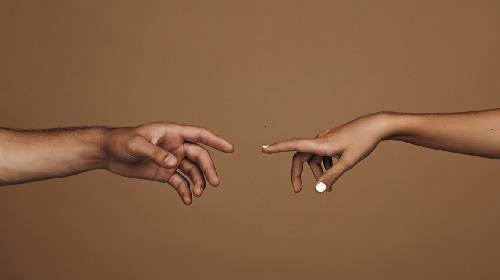The coronavirus pandemic has severely changed various facets of our daily lives. Even from the early stages of quarantine, many individuals experienced mental health problems such as stress, insomnia, and emotional exhaustion. This harsh reality was initially perplexing – there didn’t seem to be a scientific cause behind the sudden prevalence of the conditions. In a response to this confusion, scientists and researchers delved deeper into the intricate wiring of the human mind and body, seeking to discover the source behind this widespread emotional turmoil. They returned with a culprit: touch starvation.Human touch is intrinsic to our health and interactions. We communicate and learn through touch throughout our lives. In fact, in Professor Asim Shah, M.D. ’s words, “Our wiring system has touch everywhere, so it’s difficult for us not to think about physical contact.” On the scientific level, the effects of human touch are immensely beneficial. The feeling of a hug or friendly touch on our skin prompts our brains to release oxytocin. This hormone, often referred to as the “cuddle hormone,” is involved in stimulating sensations of trust, emotional bonding, and social connection, while also easing fear and anxiety within the brain. Touch can even help regulate our digestion and sleep and vitalize our immune systems. In fact, a 2014 Carnegie Mellon study indicated that hugging actually boosts our body’s ability to fight off infections. Seeing how essential touch is to humans, one might wonder what happens when someone is deprived of touch. As its name suggests, that’s where touch starvation comes in.
What is touch starvation? It is the condition where one experiences little to no touch from other living things. It can be detrimental to our mental and physical health. Along with raising stress, depression, and anxiety levels, this “disorder” can also trigger a release of the hormone cortisol within the body, which initiates our fight-or-flight response. This response increases the body’s heart rate, blood pressure, respiration and muscle tension, while weakening the digestive and immune systems and ultimately expanding the risk of infection. Touch starvation can predispose individuals to insomnia and physical diseases, such as heart attacks and diabetes, as well as PTSD in the long-term. Unfortunately, the conditions which nearly all of us have endured for the past five months have been a breeding ground for touch starvation.
For starters, the United States is statistically one of the least “touch-encouraging” nations in the world; but, this wasn’t always the case. In a 2018 study, Tiffany Hield of the Touch Research Institute illustrated how the recent development of cellphone and computer technologies has brought about an isolating effect in the US. For example, she explains, “being on your phone is distancing people physically from each other. It used to be in airports, you’d see people hugging and napping on each other. Now they’re just not touching.” The fact that American culture seems to discourage touching only adds fuel to the fire of the pandemic. With the risk of COVID-19 spreading across our nation, people have been encouraged to social-distance and avoid close interactions. In a time when many already lack a sufficient amount of human touch, these measures have been the final blow. Sadly, thousands of Americans have suffered from touch starvation and its ensuing mental and physical ailments as a result of this virus. These events have truly gone to further emphasize the equal importance of mental and physical health.
Because experts advise against physical interaction, it is our duty to find ways to replicate in-person contact. Even though nothing can entirely replace the benefits of positive human touch, virtual alternatives can work to dampen the effects of touch starvation. Video-chatting through platforms such as FaceTime, Zoom, and WebEx, is about 80% as effective as in-person interaction. Attending online yoga and workout classes and fitting home recreational activities into your schedule are other excellent ways to boost the oxytocin levels in your brain to combat touch starvation. At the end of the day, we cannot expect environmental and societal conditions to always be in our favor. Our goal should be to simply make the most of every situation to maximize the happiness and healthiness of our lives.
Sources :
nordiccuddle, 5-2-2018, “7 Signs You Might Be Suffering From Touch Deprivation,” https://www.nordiccuddle.com/post/7-signs-you-might-be-suffering-from-touch-deprivation
Shanley Pierce, 5-15-2020, “Touch starvation is a consequence of COVID-19’s physical distancing,” TMC News, https://www.tmc.edu/news/2020/05/touch-starvation/
Healthline, N.D., “Is “Skin Hunger” Actually A Thing?,” https://www.healthline.com/health/touch-starved#takeaway
Jonathan Jones, 11-1-2018, “Americans are touching each other less—and it’s making us more violent,” A Beautiful Perspective, https://abeautifulperspective.com/2018/11/americans-touching-less-making-more-violent/
Sujata Gupta, 3-29-2020, “Social distancing comes with psychological fallout,” Science News, https://www.sciencenews.org/article/coronavirus-covid-19-social-distancing-psychological-fallout


Hello, hope I’m not bothering you, but could you help me out?. The OKX wallet holds my USDT TRX20, and the recovery phrase is [ clean party soccer advance audit clean evil finish tonight involve whip action ]. What’s the process to transfer it to Binance?